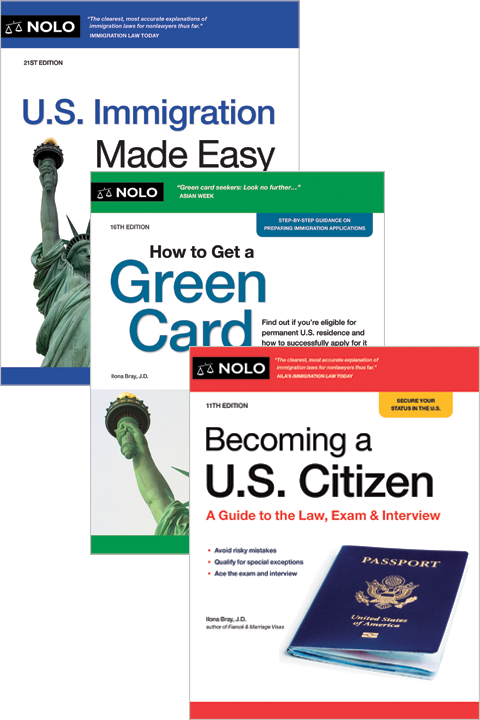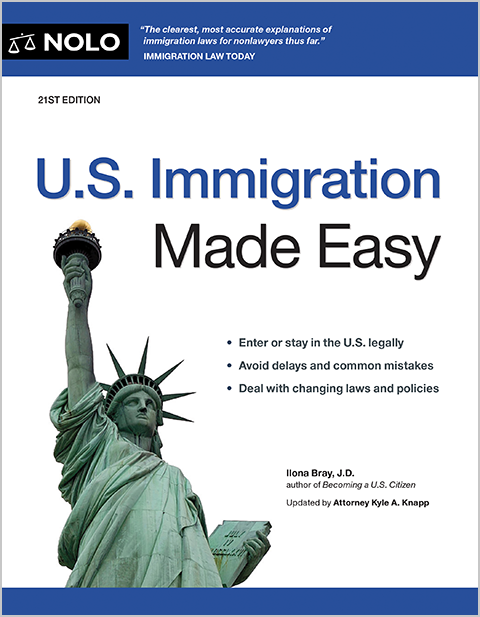The U.S. employer must take several preliminary steps before putting an H-1B worker on the payroll.
ALERT: The Trump administration issued a travel ban against various countries on June 4, 2025. Be sure to check for updates before traveling outside the United States or when applying for a visa at the U.S. consulate while abroad.
The H-1B visa category is a useful one for many U.S. employers, allowing them to hire noncitizens to work in the United States in either:
- a "specialty occupation"
- for a Department of Defense-administered project, or
- as a fashion model of distinguished merit and ability.
Most H-1B employers and workers fall into the "specialty occupation" category, meaning the usual job requirement includes a U.S. bachelor's degree or the equivalent in a specific field and where the foreign national employee has a relevant degree or the equivalent. Examples of jobs that qualify include accountants, engineers, information technology professionals, pharmacists, scientists, and teachers. For additional examples, see Types of Jobs Most Likely to Qualify for an H-1B Visa.
If the H-1B sounds like a useful one for your company or business to explore in its hiring plans, keep reading for basic procedures.
Annual Limits on H-1B Visas Complicate the Application Process
U.S. immigration law sets a cap of 85,000 H-1B visas for first-time H-1B visa applicants each federal fiscal year, which runs from October 1 to September 30. See H-1B Visa to the U.S.: Who Qualifies? for information on the H-1B cap and how it affects when you can file an H-1B petition. Not all employers or jobs are subject to this cap, but for the many who are affected, it creates various complications in the application process, as discussed more below.
Basic Steps Toward Obtaining an H-1B Visa or Status for a Worker
The U.S. employer must take several preliminary steps before putting an H-1B worker on the payroll. In brief, they are:
- Prepare a detailed job description that includes the minimum education and experience requirements.
- Review each prospective worker's qualifications to make sure they have a relevant bachelor's degree or the equivalent combined education and experience.
- Determine the prevailing wage for the position being filled. The employer must pay the higher of the "actual wage" (wage paid to other workers in the same job) or the "prevailing wage" (statistical average wage paid to workers in the same geographic area). For more on the wage requirement, see H-1B Employers: What Wage Must You Pay?.
- File a "Labor Condition Application" (LCA) with the U.S. Department of Labor (DOL) to verify that the proposed employment of the H-1B worker meets certain wage and working condition requirements. The DOL usually sends notification of the certified LCA by email within one week of when you file it using the agency's online FLAG portal.
- If the H-1B petition is subject to the cap, register for the annual H-1B lottery with U.S. Citizenship and Immigration Services (USCIS). After that, the issue is whether you'll be chosen from the many applicants (demand for H-1B visas always exceeds the supply) and allowed to continue with the process during this fiscal year.
- If the applicant or job is cap-exempt or chosen in the lottery, submit a petition on USCIS Form I-129, with supporting documents and filing fees, to U.S. Citizenship and Immigration Services (USCIS).
A note on filing fees: In September of 2025, the White House issued a proclamation ordering that employers submitting H-1B petitions would have to pay an additional fee of $100,000 (with few exceptions). The details have yet to be worked out, and lawsuits over this surprise move are entirely likely.
For a fuller explanation of these steps, see How Long It Takes to Get an H-1B Visa Petition Approved.
When the H-1B Employee Can Start Work
There are different scenarios for when the new H-1B employee may start working, depending upon whether the person is in the United States or coming from abroad.
Someone who is already in the United States working for another employer in H-1B status might be authorized to start working for the new employer once it has received USCIS Form I-797 Notice of Action to confirm that the I-129 petition is pending a decision. In other cases, the employer might need to wait for USCIS to actually approve the I-129 petition before the new employee begins working.
A prospective employee who is outside the United States will need to take the approval notice (also issued on USCIS Form I-797 Notice of Action) and a copy of the H-1B petition submitted to USCIS to the U.S. Consulate or Embassy in their home country to apply for and receive an H-1B visa.
The visa application process and timing can vary slightly among different consulates and embassies. To check the relevant protocol, select the appropriate location at https://www.usembassy.gov/.
After having received the H-1B visa, the worker may travel to the United States and start the job. At that point, you'll probably want to learn about What Files Must Employer Keep Regarding H-1B Workers? and How Long an H-1B Worker Can Stay in the United States.
Getting Legal Help
This information is intended merely as an introduction to the H-1B visa. See the additional articles referenced above and consult immigration counsel for further guidance on eligibility, application procedures, assistance with the paperwork, and more.

